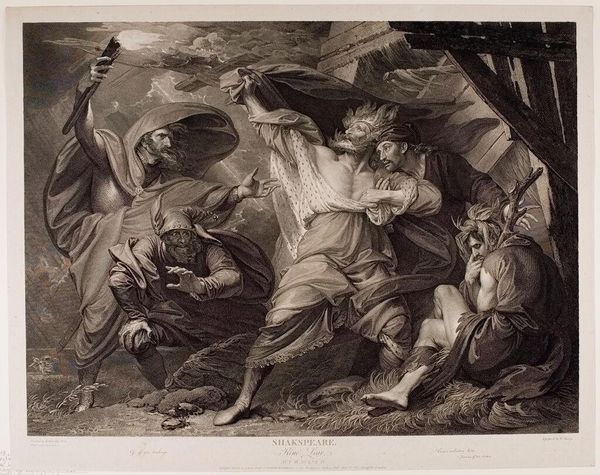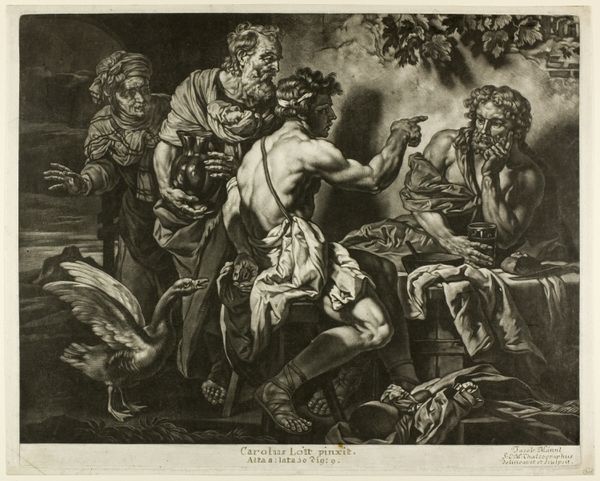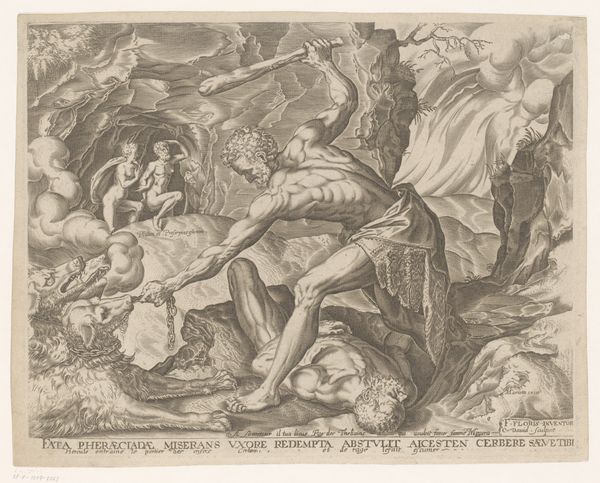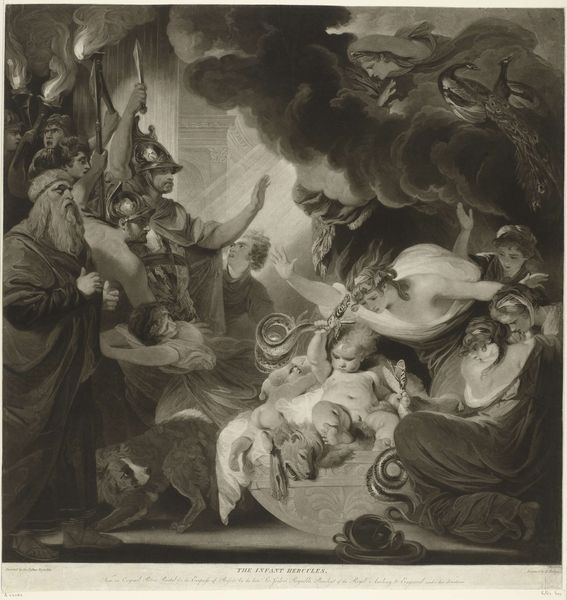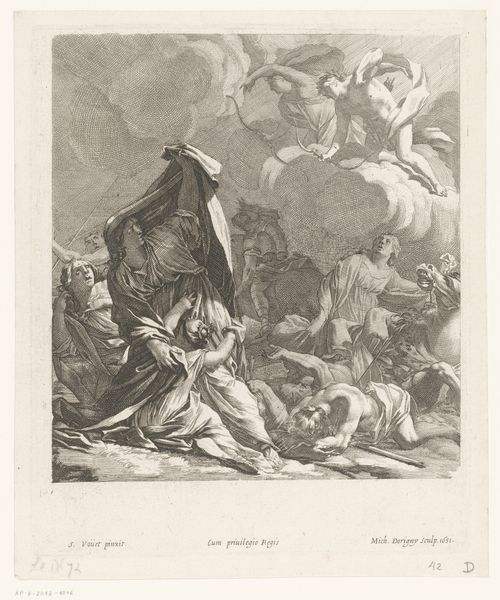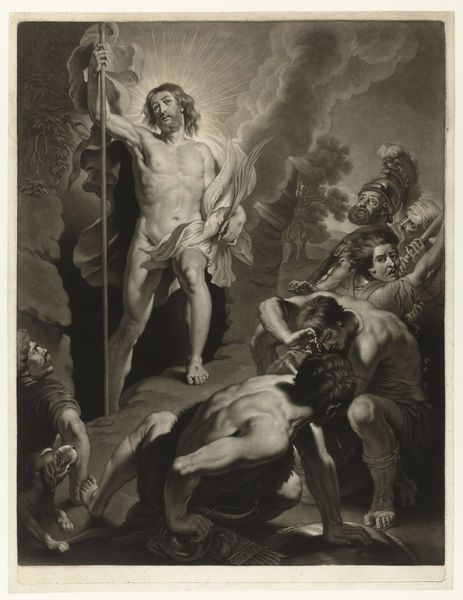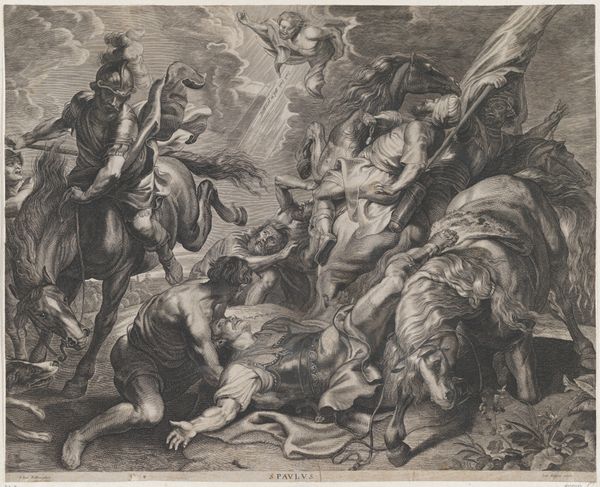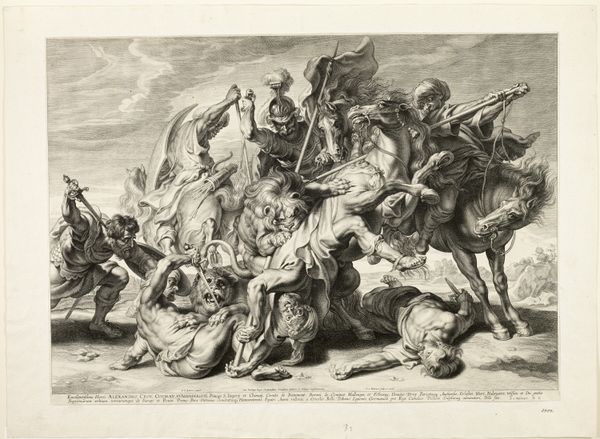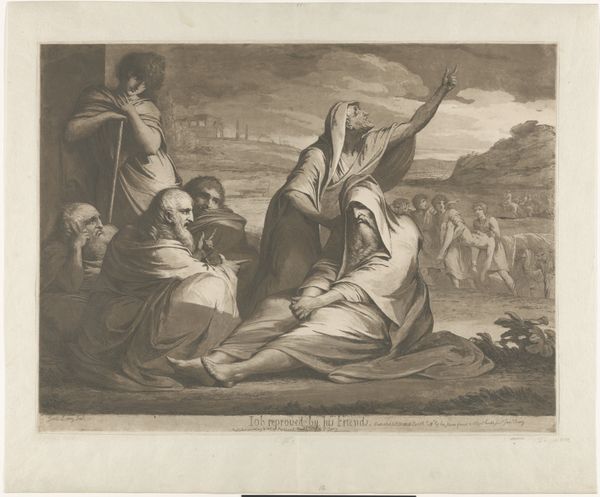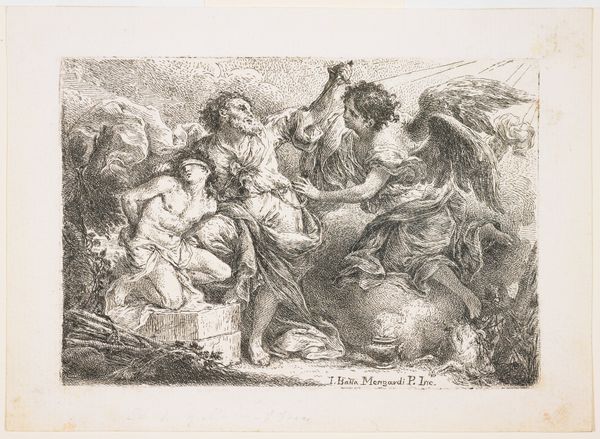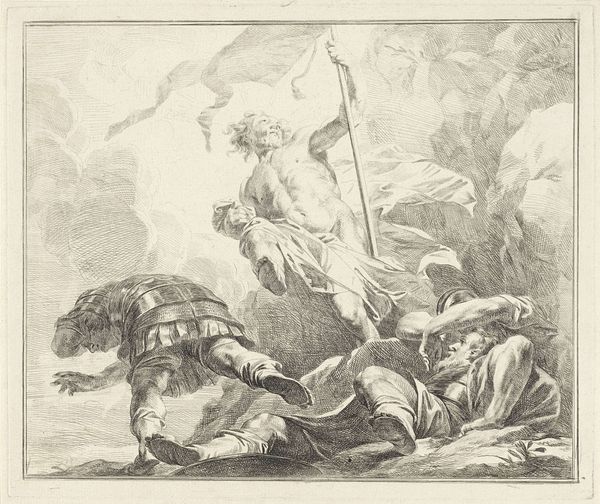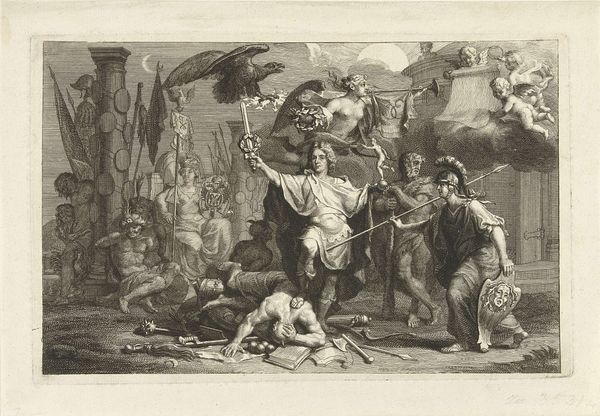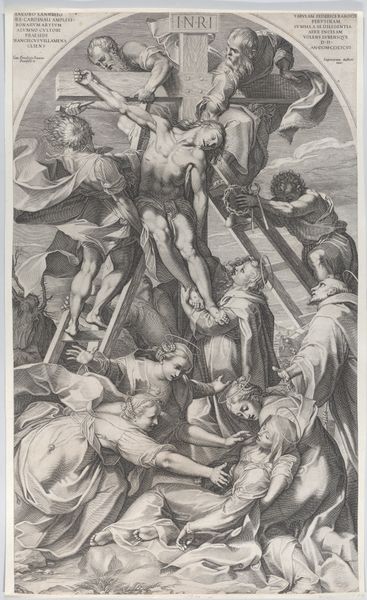
"Off, off, you lendings–Come unbutton here" (Shakespeare, King Lear, Act 3, Scene 4) 1793
0:00
0:00
drawing, print, engraving
#
portrait
#
drawing
#
narrative-art
# print
#
pencil sketch
#
charcoal drawing
#
figuration
#
romanticism
#
portrait drawing
#
history-painting
#
academic-art
#
engraving
Dimensions: image: 17 3/8 x 23 5/16 in. (44.2 x 59.2 cm) sheet: 19 1/4 x 24 7/16 in. (48.9 x 62.1 cm)
Copyright: Public Domain
Curator: This print from 1793 by William Sharp plunges us right into the heart of Shakespeare's King Lear. The full title, rather beautifully, quotes Lear himself: "'Off, off, you lendings – Come unbutton here'." It’s currently held here at the Metropolitan Museum of Art. Editor: What strikes me immediately is the swirling intensity – a vortex of emotion and frantic energy visualized in stark monochrome. The light seems to come from nowhere and everywhere at once, adding to that sense of unease. Curator: Absolutely, Sharp's work here epitomizes the Romantic style, with its emphasis on extreme emotional states. This is Lear at his most vulnerable, stripping himself bare, both physically and psychologically. He’s renouncing all worldly possessions, equating them with madness. Editor: The figures huddled around Lear carry a certain symbolic weight. That one holding the torch, almost shielding his face, is that meant to evoke something? Perhaps guidance, wisdom... or the blinding truth? Curator: It’s definitely suggestive. He’s thought to represent Kent, disguised, loyal even when cast out. That figure is holding up that pitiful light, offering the only source of illumination in Lear’s descent into mental darkness. You also have the Fool huddled and despondent; he often functions as Lear’s conscience, the truth-teller, so his suffering here underscores Lear's torment. Editor: The choice to use engraving is so crucial, isn't it? The fine lines, the almost obsessive detail... It traps the viewer in this moment of profound unraveling. Engravings seem to echo something ancient or somehow... irrefutable. Like we are seeing truth on the page. Curator: Sharp really exploits the medium’s capacity for detail to create an incredibly rich emotional landscape, the lines feeling almost like cracks running through Lear’s psyche. And considering its origins as a history painting, there’s such raw psychological insight. Editor: Indeed. We’re witnessing not just a historical or fictional moment, but the very essence of human suffering laid bare through powerful visual metaphor. It is a visual distillation of madness. Curator: And it really speaks to the play's timelessness, doesn’t it? These themes of power, loss, and what truly matters, keep echoing. It has the impact to speak across centuries. Editor: Yes. It is a stark reminder that the threads connecting our exterior selves to our core being can sometimes snap... revealing an inner storm just as fierce as what Shakespeare so poetically wrote centuries ago.
Comments
No comments
Be the first to comment and join the conversation on the ultimate creative platform.
